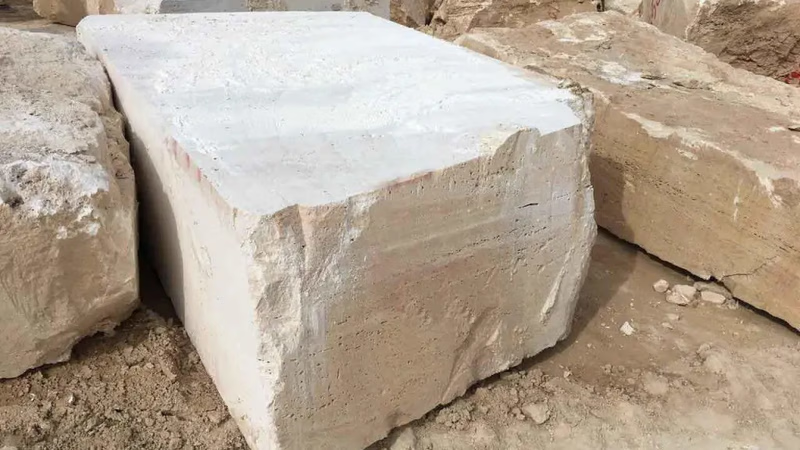
Travertine"s unique texture enhances luxury architecture and decoration. "
Travertine continues to play a significant role in today's luxury architecture and decoration. It is a form of limestone that has been used as a building material for centuries, and its timeless beauty, durability, and versatility make it a popular choice in luxury projects.In architecture, travertine is often used for exterior cladding, creating stunning facades that exude elegance and sophistication. Its natural earthy tones, ranging from creamy whites and beiges to warm browns, add a sense of warmth and luxury to buildings. Travertine can be honed, polished, or left in its natural state, offering a range of aesthetic options to architects and designers.
Travertine comes in a variety of finishes, including polished, honed, brushed, tumbled, and chiseled. This versatility allows it to be used in a wide range of design styles, from modern and contemporary to traditional and rustic. It can be seamlessly incorporated into different architectural elements such as flooring, walls, stairs, columns, fireplaces, and even outdoor spaces like patios and pool decks. While travertine is commonly associated with warm earthy tones, it is available in various colors and shades. In addition to the classic beige and cream hues, you can find travertine in light ivories, golden tones, walnut browns, and even silver-gray varieties. This wide range of colors enables designers to select the most suitable option to complement their design vision and create the desired ambience.
Travertine is also used extensively in interior design, particularly in spaces where a touch of luxury is desired. It is commonly used for flooring, wall coverings, and countertops in high-end residential and commercial projects. The unique texture and veining patterns found in travertine create visual interest and give spaces a distinct character. From contemporary minimalist designs to more traditional or rustic styles, travertine can be adapted to various design aesthetics. One of the reasons travertine is favored in luxury architecture and decoration is its durability. It is a dense and strong material that can withstand heavy foot traffic and resist wear and tear over time. This makes it suitable for high-traffic areas such as grand entrances, lobbies, and luxury retail spaces.
Moreover, travertine is considered a sustainable choice in architecture and design. It is a natural stone that is widely available, and its extraction and production processes have become more environmentally friendly over the years. Additionally, travertine has excellent thermal properties, helping to regulate indoor temperatures and reduce energy consumption.
Luxurious buildings with impressive stone facades are among the most beautiful features of the city that dazzle the eyes of every viewer. Among these, travertine is the best choice for these buildings due to its variety of colors and extraordinary pattern. But to know what travertine is and get to know more about this beautiful gift of nature to our homes. If its porosity is less and its color is lighter, it is considered as a better quality stone. The advantages of travertine stone are good resistance to cold and heat, adhesion to mortar and also very reasonable price. Of course, because the stone is sedimentary, very cold weather can lead to its crushing.
Travertine exhibits a unique texture with natural pits and voids created by water erosion, giving it a distinctive character. These voids can be left unfilled for a more rustic and organic appearance or filled with resin or grout for a smoother surface. The veining patterns found in travertine can vary from subtle to bold, adding visual interest and creating a sense of movement in architectural and decorative applications. Travertine is often chosen for its ability to seamlessly connect indoor and outdoor spaces. By using the same travertine material in both areas, such as extending a travertine floor from an interior space to a patio, you can create a harmonious flow and a sense of continuity. This integration is particularly desirable in luxury homes, resorts, and high-end hospitality projects, where indoor-outdoor living and entertainment spaces are valued.
Travertine is a durable material that can withstand heavy use and retain its beauty for decades. It is relatively easy to maintain, requiring regular cleaning and occasional sealing to protect against stains and moisture. With proper care, travertine can maintain its luxurious appearance and stand the test of time, making it a reliable choice for long-term investments in architecture and decoration. As a natural stone, travertine offers inherent sustainability benefits. It is a non-toxic and recyclable material, and its production processes have become more environmentally friendly, focusing on reducing waste and energy consumption. Choosing travertine as a building material aligns with the growing emphasis on sustainable design practices and the use of natural materials that contribute to healthier and more eco-conscious environments.
One of the good properties of this stone is its thermal insulation and sound insulation, which the cavities inside the stone have created this property, and another advantage of the cavities in travertine is the increase in the strength of the installed stone, which penetrates the cement. Inside these cavities, the adhesion of the rock to the wall increases. The porosity of the travertine rock is due to the space occupied by the gases in the hot water, which is a source of sedimentation that prevents the formation of a compacted rock mass.
-
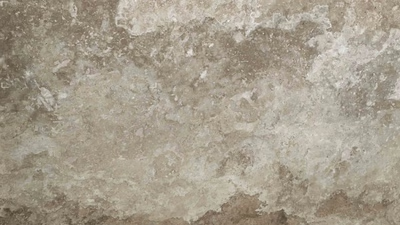
Travertine is a popular natural stone known for its aesthetic appeal and durability. Its unique veining and warm colors make it a preferred choice in luxury architecture. The stone is resistant to scratching and chipping, making it suitable for high-traffic areas like flooring and countertops. However, certain varieties may have limited availability, impacting sourcing options. Travertine"s porous nature requires regular sealing to prevent stains from spills, particularly acidic substances. While it offers excellent heat resistance and thermal insulation, making it ideal for hot climates, its softness compared to other stones like granite can lead to scratches and dents. Maintenance involves using pH-neutral cleaners and protective measures to preserve its appearance. Despite being considered a luxury material, recent market changes have made travertine more accessible due to increased supply and reduced prices.
This has expanded its use in various applications, including outdoor spaces and ceremonial halls. Overall, travertine combines elegance with practicality but requires careful handling and maintenance. "
-
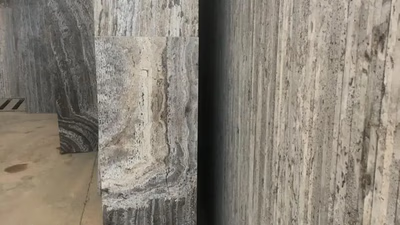
Leather travertine features a textured surface that mimics the look and feel of leather, achieved through specialized manufacturing techniques. This finish enhances the stone"s natural beauty, adding depth and character to various architectural applications. The unique texture creates an inviting ambiance, making it suitable for flooring, wall cladding, and countertops. Two primary cutting methods are used: Veincut, which exposes the stone"s natural veining for a contemporary look, and Crosscut, which offers a more organic appearance by highlighting color variations. The finishing process is crucial as it determines the final aesthetic; leather travertine is treated to maintain its matte finish while ensuring durability. Regular maintenance is essential to preserve its appearance and prevent staining. Leather travertine is ideal for both residential and commercial spaces, particularly in areas requiring slip resistance like bathrooms and outdoor patios.
-
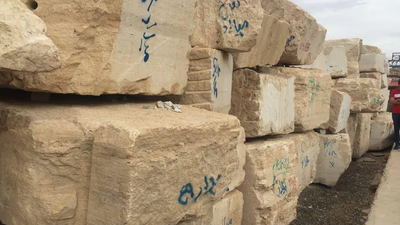
Travertine stones are versatile and available in various dimensions, making them suitable for numerous applications. Commonly used in both residential and commercial spaces, travertine tiles enhance aesthetics with their durability and elegance. Standard tile sizes include 12" x 12", 18" x 18", and 12" x 24", catering to different design needs. Larger travertine slabs, typically ranging from 2 cm to 3 cm in thickness, are ideal for countertops and tabletops, providing a luxurious surface that is heat-resistant. For outdoor use, travertine pavers are thick and durable, available in sizes like 6" x 12" and 24" x 24", perfect for patios and walkways due to their slip-resistant properties. Travertine mosaics offer intricate design possibilities with smaller pieces that can be arranged into patterns for backsplashes or decorative accents. The adaptability of travertine dimensions allows for creative solutions in both interior and exterior applications, ensuring functionality while maintaining visual appeal.
-
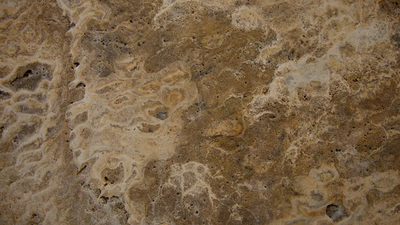
Travertine is a versatile stone known for its unique textures, including natural, honed, brushed, polished, and tumbled finishes. The natural texture features pits and voids from gas bubbles formed during its creation, giving it an earthy charm. Honed travertine offers a smooth, matte finish with minimal visible pores for a contemporary look. Brushed travertine retains its natural voids while providing a textured surface that adds depth. Color variations in travertine range from ivory to caramel, with rarer colors like brown and gold commanding higher prices due to their limited availability. The stone"s durability and resistance to chemicals and thermal changes make it suitable for various environments; however, caution is advised in cold climates due to potential freeze-thaw damage. Polished travertine boasts a glossy finish that enhances its color and veining, ideal for formal settings. Tumbled travertine presents an aged appearance, perfect for rustic designs.
Understanding these characteristics can aid in selecting the right type of travertine for specific applications. "
-
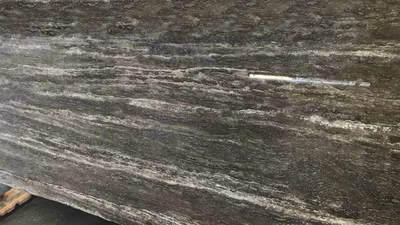
Travertine has been a vital building material in West Asia for centuries, prominently featured in historical sites like Petra and Persepolis. Its durability and aesthetic appeal align with the region"s architectural heritage, making it a preferred choice for mosques, palaces, and traditional houses. The Middle East ranks among the top producers of decorative stones globally, with Iran being a significant contributor, producing 10 to 15 million tons annually. The region"s travertine mines hold an estimated capacity of 60 billion tons, with over 75% extracted from Iranian sources. This stone is not only valued for its quality but also for its cultural significance in religious architecture. Contemporary projects in cities like Dubai and Riyadh continue to utilize travertine, enhancing modern designs with its timeless elegance. The local availability of travertine supports a sustainable supply chain while contributing to the regional economy.
-

Travertine is a versatile and durable natural stone that plays a crucial role in luxury architecture and decoration. Its unique aesthetic, characterized by earthy tones and distinct veining patterns, allows it to complement various design styles, from modern to traditional. Commonly used for exterior cladding, flooring, and wall coverings, travertine enhances the elegance of high-end residential and commercial spaces. Its durability makes it suitable for high-traffic areas, while its thermal properties contribute to energy efficiency. The stone"s sustainability is also noteworthy; it is a natural material with environmentally friendly extraction processes. Travertine"s ability to seamlessly connect indoor and outdoor spaces adds to its appeal in luxury designs. With proper maintenance, travertine retains its beauty over time, making it a reliable choice for long-term investments in architecture.
-
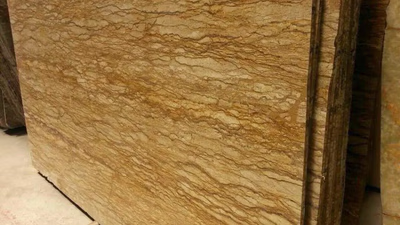
Travertine and marble are distinct natural stones with different properties and aesthetics. Travertine, a sedimentary rock, features earthy tones and a rustic appearance, making it ideal for Mediterranean designs. It is softer and more porous than marble, which is a metamorphic rock known for its elegance and durability. Marble offers a wider range of colors and veining patterns, often associated with luxury in both classic and contemporary settings. While travertine is suitable for low-moisture areas like living rooms, marble excels in high-moisture environments such as bathrooms due to its lower porosity. Both stones require regular maintenance, including sealing to prevent stains. Travertine is generally more affordable than marble, appealing to budget-conscious consumers seeking natural stone aesthetics. However, marble"s perceived value can enhance property appeal.
Understanding the differences between these stones can help consumers make informed choices based on design needs and budget constraints. "
-
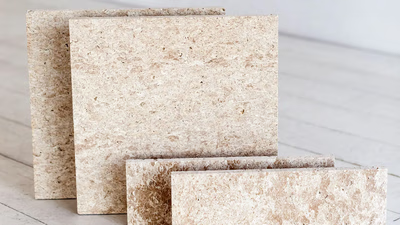
Travertine, a sedimentary rock formed from calcium carbonate, has a rich historical significance, particularly in ancient Rome where it was extensively used in iconic structures like the Colosseum and the Roman Forum. Its durability and aesthetic appeal made it synonymous with Roman architecture. High-quality travertine is primarily sourced from Italy, especially Tivoli, but also from Turkey, Iran, Mexico, Peru, and the United States. The stone"s use extended beyond Rome to ancient Persia and Mesopotamia, exemplified by its presence in structures like Persepolis. After a decline during the medieval period, travertine saw a resurgence during the Renaissance and Baroque periods as architects favored its workability and beauty. Notable examples include the Trevi Fountain in Rome. Travertine"s versatility allows it to be used for facades, flooring, and interior decorations in modern architecture. Its enduring popularity is reflected in contemporary projects ranging from luxury homes to public spaces. Additionally, travertine plays a vital role in architectural conservation efforts aimed at preserving historical sites and ensuring the longevity of this cherished material.
-
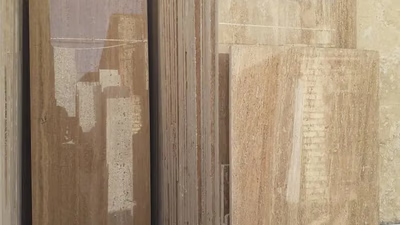
Travertine is a sedimentary rock formed through the precipitation of calcium carbonate from groundwater, primarily composed of calcite. Its formation begins with limestone or marble, which contain high concentrations of calcium carbonate. Groundwater rich in dissolved carbon dioxide percolates through these rocks, dissolving small amounts of calcium carbonate. The appearance and texture of travertine vary based on impurities and mineral content during its formation. Typically associated with hot springs or geothermal activity, travertine deposits are formed when hot water passes through carbonate rocks, leading to the precipitation of calcite crystals as conditions change. This process results in layered deposits that can range from a few centimeters to several meters in thickness. The presence of air bubbles and various impurities contributes to the diverse color variations found in travertine, including white, cream, pink, brown, and green hues. Notable travertine formations include Pamukkale in Turkey and Mammoth Hot Springs in Yellowstone National Park. The unique features of travertine such as terraces and mineral deposits are influenced by water flow rates and organic matter interactions.









